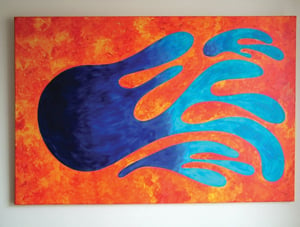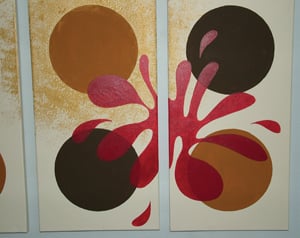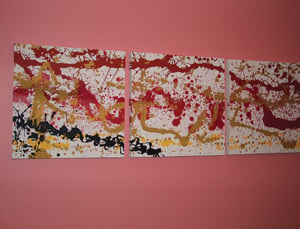Artistic licence
Licensing your art for commercial use is not for everyone, but Mainda Kiwelu believes that, used properly, it can open up revenue streams and new audiences



According to a recent BusinessWire Report 1, the licensing industry exceeds $149bn (£91.5bn) across entertainment/character, fashion, sports, corporate trademark and art licensing. Art licensing is the process by which artists, illustrators and photographers lease their artwork by means of a contractual agreement for reproduction, particularly on consumer products. The artwork, referred to as ‘property’, may be applied to one or more categories such as paper products, apparel, homeware, toys, and so on. Licensing is no longer just the pursuit of individual artists; many cultural establishments such as the V&A, the National History Museum and the British Library have thriving licensing programmes developed from their collections.
The cross-over to commercial art may not sit comfortably for many, particularly in fine art where the artist’s primary ambition may be to be shown in a reputable gallery and hopefully sell the artwork there. Reproductions are usually restricted to limited prints. Mass production using their work may seem a step too far. This is a subjective issue and is ultimately down to an artists’ own perception of the status of their work and what they think will enhance or devalue that status. Managed carefully, licensing can not only provide a revenue stream for the artist, but also expose an individual’s work to new audiences. A strong brand can be developed, in keeping with the market type that is being sought.
Going down the licensing route can be rewarding, but it is certainly not easy. The economic trouble on the High Street has resulted in winding down of major stores such as Habitat. Product manufacturers are now even more selective and risk averse. But as with all troubled times, opportunities are still there. Consumers are changing their spending patterns in favour of ‘thrifty upgrades’ – spending less but on better value products. They are looking for striking, authentic, good value products, and high-quality artwork can help in making that distinction.
So how does one get started? Good old field research is best. A window-shopping trip can get so much more interesting once you start scrutinising the designs, prints and colour palettes being used. An artist can then start considering where their artwork best fits. Gaps may be identified offering new and interesting ways to present products. It is important for the artist to find their niche and present a strong theme, subject matter and style. A criticism of commercial art in the past few years is that there has been a lazy phase with fewer stores and less variety resulting in bland, nondescript product designs. There is obviously no more room for this. Artists and designers need to demonstrate that they are creating value for consumers. Artists should also be willing to start small, nurturing and developing their niche areas rather than feeling that success only starts once they are picked up by the large retailers.
After getting an idea of where their artwork may fit in, the prospective licensor (artist) must do more in-depth research online and by visiting trade shows to get a better idea of what licensees are looking for. This will also help to answer one of the big questions: whether or not to get a licensing agent. An agent will be looking for up to 50% of royalties earned on a licensed property for the sales, marketing, maintaining relationships with retailers, collecting royalties and so forth on behalf of their client. The artist needs to decide whether they have the time and skills needed to carry out these activities, otherwise they need to begin their search for an agent. It’s also important to keep in mind that it takes anything from 18 months to three years for a property to start earning royalties, depending on the type of product category the art is being applied to. This is partly because retailers and manufacturers are working up to two years in advance trying to predict what will be hot, not for this Christmas but the Christmas after that.
Licensing agents and product manufacturer need to be reassured that the artist can work to professional standards and keep to deadlines. The artist must therefore learn not only about trends and what is commercially suitable, but also what type of art reproduces well and what sort of formats the work needs to be presented in.
Many artists would like to license their work but worry at great length about copyright issues and getting the right licensing deal. There is no typical licensing deal; it will depend on the product, type of image and reputation of the artists and likewise earnings will vary. In his book, ‘Licensing Art 101’, Michael Woodward gives examples of simple licensing agreements. That is a good place to start to help establish what should be sought from an agreement. Ultimately, a good lawyer and bookkeeper will be a worthwhile investment, if for nothing else, some peace of mind.
Join the Discussion
You must be logged in to post a comment.